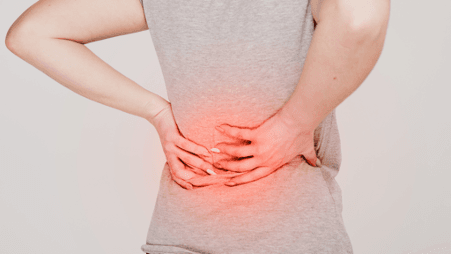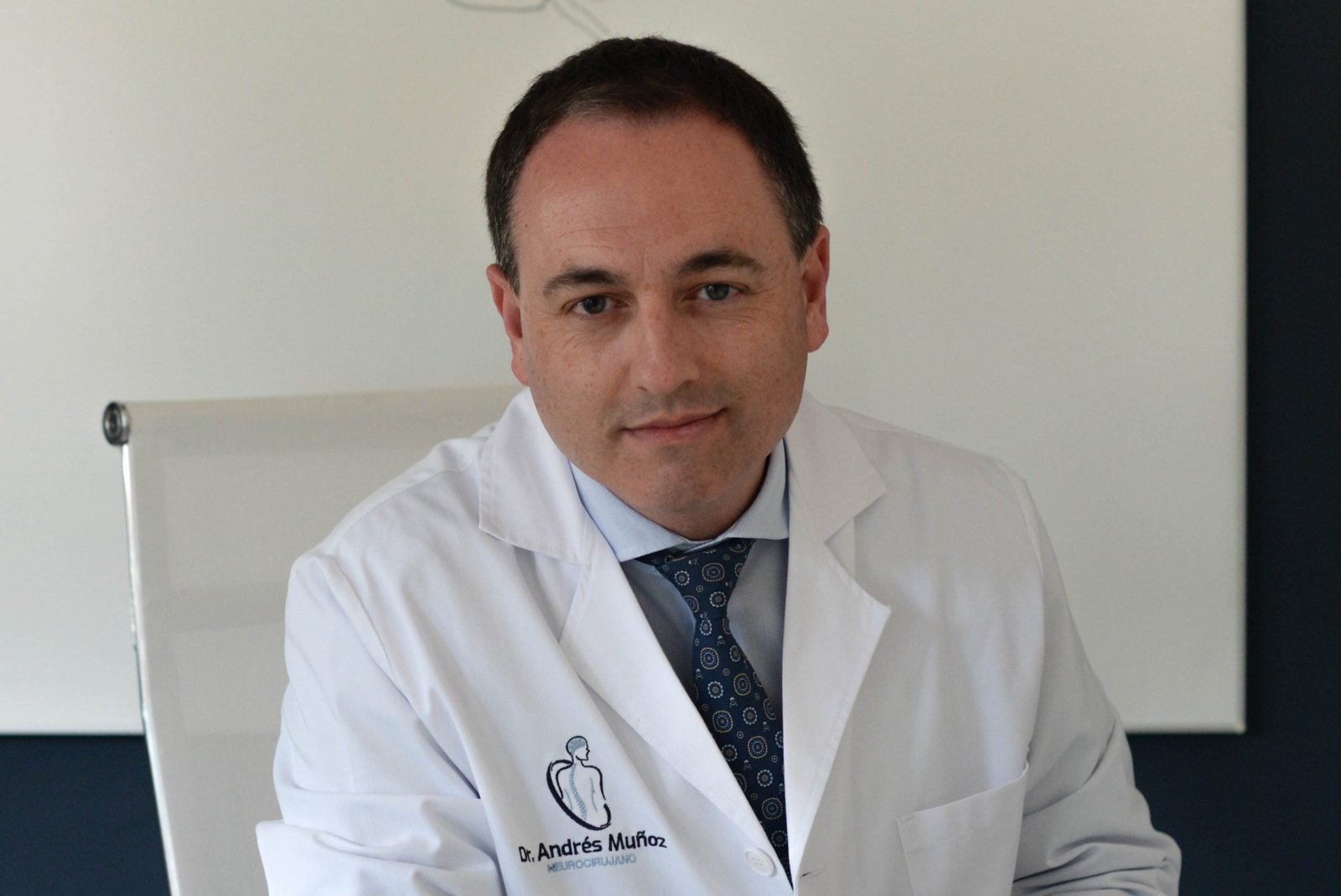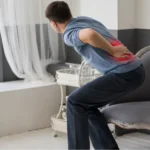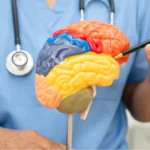Do you wake up every morning with a throbbing pain in your lower back that extends down your leg? At first, you probably think it is a temporary discomfort, perhaps caused by poor posture, a sport or work-related issues. However, over time, the pain becomes more persistent, to the point of limiting your movements and affecting your daily life.
If this sounds familiar, you could be suffering from a herniated lumbar disc, one of the most common spinal conditions. It is estimated that between 80% and 90% of the population will experience back pain at some point in their lives, and in many cases, lumbar herniated disc s are responsible for this symptomatology.
What is a lumbar hernia and why does it occur?
Lumbar disc herniation is a pathology in which the internal material of the intervertebral disc, known as nucleus pulposus, moves out of its normal position and compresses nearby nerve roots. This compression can generate intense lumbar pain, irradiation towards one or both legs and, in some cases, neurological deficits.
In most cases, initial treatment is conservative, based on physical therapy, analgesics and changes in physical activity. However, approximately 10% of patients require surgical treatment to relieve symptoms and improve their quality of life.
Causes of lumbar disc herniation
✅ Disc degeneration: intervertebral discs lose elasticity and strength, increasing the risk of herniation.
✅ Mechanical overload: improper heavy lifting or repetitive bending and twisting movements can accelerate disc wear.
✅ Sedentary lifestyle and muscle weakness: an underdeveloped musculoskeletal system reduces the “support” of the spine, favoring injuries.
✅ Obesity: high body weight increases the load on the intervertebral discs.
✅ Genetic factors: there are hereditary conditions that can influence the strength and longevity of intervertebral discs.
Symptoms indicating the need for surgery
Many lumbar hernias can be treated without surgery, but there are symptoms that require immediate medical evaluation to avoid irreversible neurological damage.
Warning signs
- Radiating pain (sciatica): burning or cramping sensation that travels down the back into the leg and is not controlled with adequate treatment for 3-4 weeks.
- Loss of leg strength: difficulty walking or performing simple foot movements.
- Numbness or lack of sensation: in the lower back, buttocks or lower extremities.
- Cauda equina syndrome: loss of sphincter control or alterations in perineal sensitivity.
If these symptoms appear, minimally invasive lumbar disc herniation surgery may need to be considered to avoid further complications.

Surgical options for lumbar disc herniation
When conservative treatment fails to relieve the symptoms of lumbar disc herniation or if some of the neurological signs mentioned above are present, surgery is recommended. Currently, minimally invasive surgical techniques have significantly improved the results, reducing recovery time and complications.
In essence, the surgical treatment of lumbar disc herniation is microdiscectomy, which consists of removing the part of the disc that is outside the intervertebral space and compresses the nerve root. The procedure is performed by means of a small incision in the back of the back and extraction of the herniated disc material with the aid of the surgical microscope. The results of this procedure are summarized below:
- 90-95% success rate, according to studies published in the Journal of Neurosurgery: Spine.
- Rapid recovery: Most patients walk the same day of surgery and resume their daily activities within a few weeks.
- Short hospitalization: Generally less than 24 hours.

What do we mean when we talk about an L5-S1 disc herniation and why does it occur?
L5-S1 disc herniation is the most common type of lumbar disc herniation; like all herniated discs, it occurs when the nucleus pulposus of the intervertebral disc moves out of place and compresses nearby nerve roots. In the case of L5-S1 herniation, this affectation occurs in the disc located between the last lumbar vertebra (L5) and the first sacral vertebra (S1), an area subjected to great mechanical load, as it supports a large part of the body weight and movement, forming the lumbo-sacral hinge.
Where does it hurt?
- Low back pain radiating down the back of the thigh and often down to the sole of the foot.
- There may be numbness or weakness in these areas.
Why is this area so common?
- It is the most mobile and the most load bearing.
- It suffers more natural wear and mechanical stress.
Treatment
The approach is the same as for other lumbar hernias:
- Conservative: if the symptomatology has been present for a short time and there is no weakness or other neurological deficits.
- Surgery: if the pain is persistent and does not improve with conservative treatment or if there are neurological deficits.

FAQ: frequently asked questions about lumbar disc herniation surgery
Is it true that spinal surgery leaves sequelae?
This is a common myth. With minimally invasive techniques, recovery is fast and safe. The key is to see an experienced specialist and follow proper rehabilitation.
When will I be able to return to work after surgery?
It depends on the type of work and the surgical technique used:
- Office or sedentary work: 2-3 weeks.
- Moderate physical work: 4-6 weeks.
- Work with weight load or intense effort: 8-10 weeks.
The physician will determine the appropriate moment according to the evolution of each patient.
Will low back pain disappear completely after surgery?
Surgery is designed to relieve nerve compression, so that radiating leg pain improves in most cases. However, low back pain may persist if there are other problems in the spine, such as advanced disc degeneration or structural alterations. Therefore, it is necessary to strengthen the paravertebral musculature through Back School exercises.
Lumbar disc herniation surgery, the road to pain-free recovery
If low back pain and sciatica are affecting your quality of life and conservative treatments have not worked, lumbar disc herniation surgery may be the best option to recover your well-being. Thanks to advances in minimally invasive surgery, today it is possible to achieve a faster and more effective recovery.
📌 If you think you might need surgical treatment, consult with a lumbar disc herniation surgery specialist to evaluate your case.
🔹 Dr. Andrés Muñoz is a reference in minimally invasive spine surgery.
📞 609 688 469



